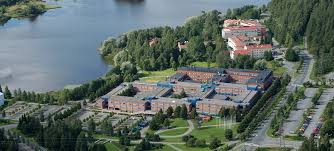
A novel method for adding liquid by-products from the wood industry into wood-plastic composites (WPCs) prior to manufacturing was developed in a new study from the University of Eastern Finland. The study also discovered that proton-transfer-reaction mass-spectrometry (PTR-MS) is a suitable method for measuring the amounts of volatile organic compounds, VOCs, released from WPCs.
Wood-plastic composites – replacing plastics with wood
There is an increasing need to find new alternatives for crude oil based materials such as plastics. WPCs are natural fibre composites with properties of both plastic and wood. These composites are used, for example, in buildings and in the manufacture of automobiles. It is estimated that the production of WPCs will experience an annual growth of 14% between 2014 and 2019.
Wood and plastics are very different materials in terms of their chemical properties, which is why additives are used in WPCs to enhance the compatibility of these constituents. Additives are also used to improve composites’ water absorbing and weather resistance properties, among other things. However, some additives are rather expensive and their incorporation into WPCs is not straightforward. Thus, WPCs are in need of novel and effective additives that are based on renewable resources.
Putting waste to good use – liquids separated from wood as additives in WPCs
In the study, liquid by-products generated from biochar production and heat treatment of wood were added to WPCs, and the effects of the additions on the composite properties were analysed. The findings have relevance for two different industries as the wood industry by-products are more extensively used in the WPC industry.
The findings of the study show that liquids separated from wood can be added to WPC granulates using the method developed in the study. Composites treated with liquids performed better in injection moulding and the samples of each material type were very homogeneous. Furthermore, the addition of liquids extracted from wood significantly reduced the water absorption of the composites and in some cases improved their mechanical properties.
To read more, please download the following PDF file from our website here underneath:













